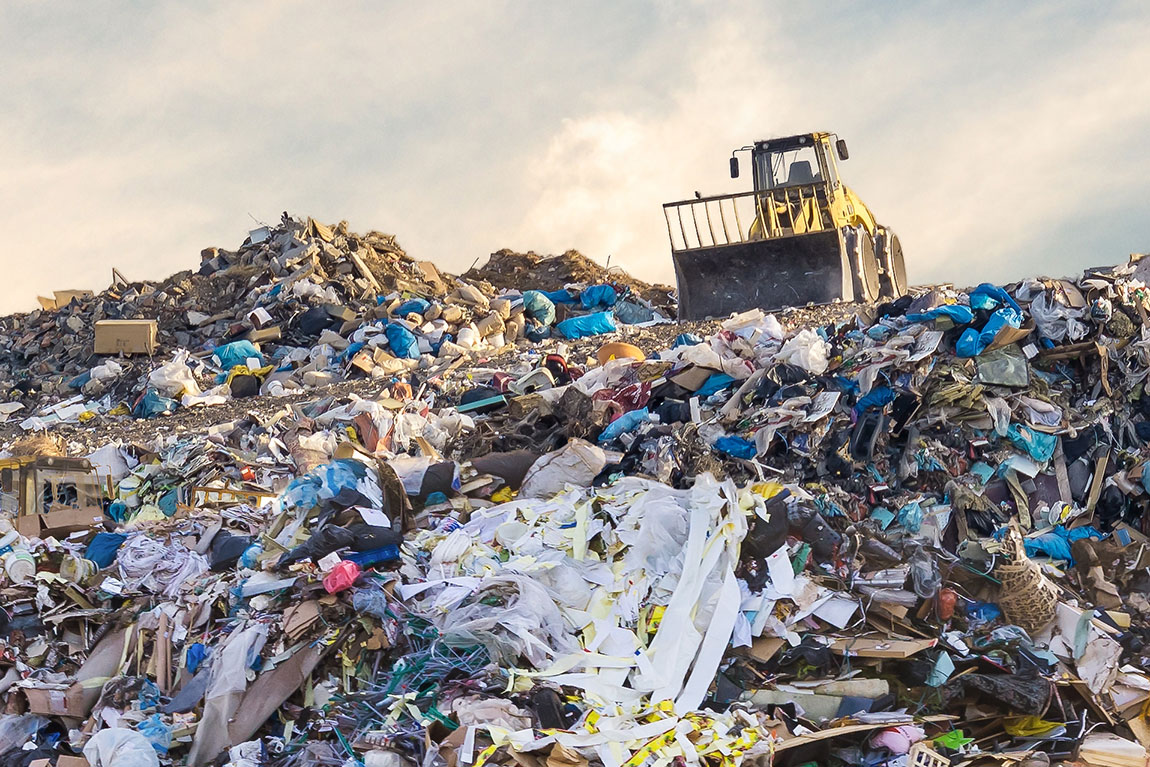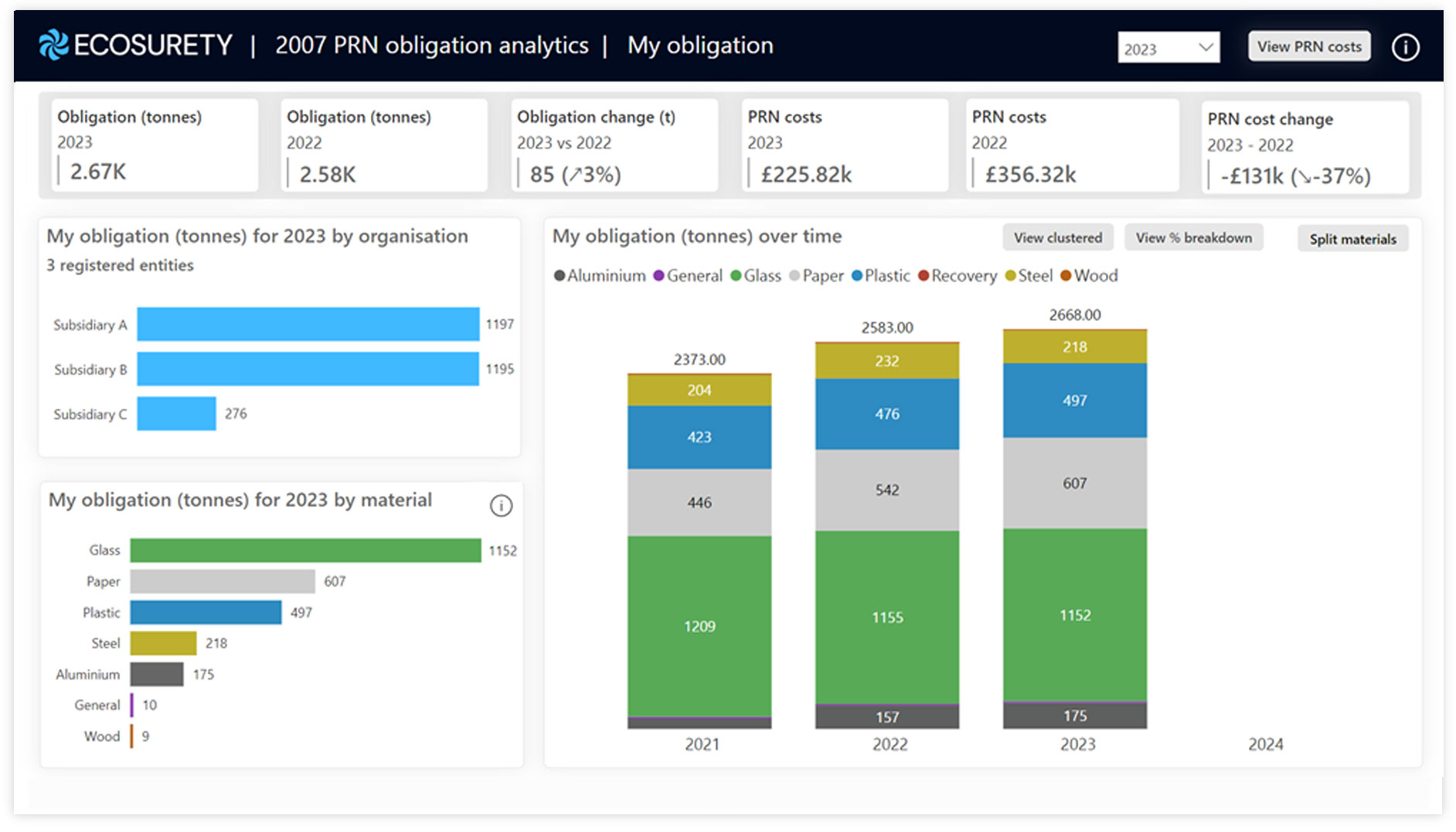Contents
- Introduction
- Key information
- The Ecosurety response
- Chapter 1: Introduction
- Chapter 2: Designing out Waste: Ecodesign, EPR and consumer information
- Chapter 3: Reuse, Repair, Refill, Remanufacture: local services and facilities
- Chapter 4: Data and Information: from industrial symbiosis to research & innovation
- Chapter 5: Construction
- Chapter 6: Textiles
- Chapter 7: Furniture
- Chapter 8: Electrical and Electronic Products
- Chapter 9: Road vehicles
- Chapter 10: Packaging, Plastics and Singleuse Items
- Chapter 11: Food
- Chapter 12: Monitoring and Evaluation
- Related knowledge
Share
Introduction
On 18 March 2021 the government released the consultation on the Waste Prevention Programme for England: towards a resource efficient economy.
The Waste Prevention Programme sets out priorities for action to manage resources and waste in accordance with the waste hierarchy - which means preventing waste and increasing reuse, repair and remanufacture of products.
Key information
The deadline for consultation responses was 10 June 2021.
You can view the original Consultation on the waste prevention programme for England: towards a resource efficient economy by clicking here which contains the questions referenced below.
The Ecosurety response
This article outlines our full consultation response which we openly shared ahead of the consultation deadline to encourage other people to use it for their own response, if they were aligned with our views. We hope this encouraged wider participation to the consultation to maximise representativity of each stakeholder group. Please note that we only responded to the questions that were relevant for us to feedback on.
Chapter 1: Introduction
Question: Do you agree or disagree with our choice of impacts and outcomes as the right goals for us to be aiming to achieve?
Agree.
Question: Do you agree or disagree that our policy approach covers all the areas for action that are needed?
Agree.
Chapter 2: Designing out Waste: Ecodesign, EPR and consumer information
Question: Do you agree or disagree that the measures described are likely to achieve the overall aim set out at the beginning of this chapter?
Agree.
We agree that design requirements for selected products may be an effective measure to encourage voluntary industry standards. We would advocate a clear framework development of horizontal requirements relating to spare part provision, recycled content, durability, or potential to disassemble and repair. However, we feel that efforts purely concentrated on the production/manufacture of products fails to account for the entire waste value chain.
In addition, we would advocate the strengthening of landfill regulations. For instance, the Netherlands has banned 35 categories of waste, in particular targeting waste streams that could be recycled or recovered for energy, except in locations that lacked alternative treatment options. This is in conjunction with a landfill tax. The Czech Republic has legislated to ban the landfilling of unsorted mixed municipal waste and recoverable waste from 2024.
We also agree with the proposed launch of a new energy-related products policy framework, in addition to the recently consulted on eco-design requirements that targets repairability and recyclability. We also agree with the consultation proposals to work with industry and key stakeholders to develop principles and approaches relating to material usage and good product design. This said, although these measures can be effective, and industry is best placed to affect change, there must be some element of regulatory requirement or incentives for this to be significantly effective.
Therefore, we would urge government to reconsider their view on tax incentives, such as VAT exemptions for re-useable or repairable products. The case study literature proves these measures can be effective. Additionally, we believe something akin to France’s repairability index would holistically connect eco-design principles, the consumer arena, and BEIS and Defra’s recent regulation on the provision of spare parts.
The consultation proposes to take forward one or more consumer information pilot schemes either relating to eco-design requirements or producer responsibility frameworks. If so, this should be piloted in relation to specific requirements for selected product types, as research shows that industry standards are much more effective with complementary consumer communication and participation. As was suggested in the packaging EPR consultations, clear binary labelling schemes will be most appropriate in the first instance, which could then develop into communication of wider sustainability metrics.
Chapter 3: Reuse, Repair, Refill, Remanufacture: local services and facilities
Question: Do you agree or disagree that the measures described are likely to achieve the overall aim set out at the beginning of this chapter?
Disagree.
We agree with the development of an information note for local authorities, including examples of best practice on reuse and providing interpretation of relevant regulations. We also agree that improvements to regulatory policy are needed – particularly in clarifying the waste hierarchy duty, and amending the definition of waste, which often hinders more sustainable waste treatment. However, we believe the proposals set out in this chapter rely too heavily on a localised approach and on local authorities. We believe there needs to be better incentives for industry and consumers as a whole.
For instance, small-scale or grassroots re-manufacture industries could be supported with low-cost loans, although investment is required to kick start this as capability and current return on investment has so far been a barrier. Alternatively, companies, universities and public services could be encouraged to include data on the procurement or production of remanufactured goods and landfill diversion.
These sectors could also be encouraged to develop waste prevention targets similar to carbon footprint targets to encourage waste prevention. This would be in keeping with proposals on government procurement which is critical and must be part of the model to measure carbon and resources used in comparison to single use. Metrics need to include, operating points, wash facility, transportation, weight, size, material and recycled content.
Research could also be conducted on a system of extended producer responsibility on purchased products to encourage their return to manufacturers or remanufacturers at end-of-life, as opposed to product-specific EPR detailed in later chapters.
Although we agree with the initiative to pilot local “circular economy hubs” we also believe that a purely localised approach to re-use, remanufacture, refill and repair, although effective, may not cause a wider step-change. Broader approaches seen elsewhere, such as developing re-use and re-manufacture targets for relevant industries, alongside recycling targets, have proven to be successful. National targets with a sole emphasis on recycling has often been cited as disincentive for activities further up the waste hierarchy.
Again, we would urge government to reconsider implementing a tax break for remanufacturers in to encourage economic resilience in the UK remanufacturing industry. Building upon the recent consultation by BEIS, government could develop a certified re-manufacturing mark to demonstrate that products have been tested and fully comply with new standards, this will improve clarification for consumer.
This could also encourage and promote closed loop recycling once no longer fit for reuse, this should be measured and included within the carbon footprint of a product to indicate an ideal number of returns before being recycled. It is also important that the ‘vessel’ is clearly marked and labelled as being for reuse and should not be recycled, the point at which reuse or recycling is determined should be made via a quality control point within the operating model
Enhancing quality of data by providing voluntary guidance to local authorities on how to fulfil current reporting requirements on reuse and recycling will be integral, not least for reforms proposed under packaging EPR and the consistent collections framework.
Chapter 4: Data and Information: from industrial symbiosis to research & innovation
Question: Do you agree or disagree that the measures described are likely to achieve the overall aim set out at the beginning of this chapter?
Agree.
We agree with the measures set out in this chapter, and believe data and accessible secondary material information will be crucial for all the policy proposals set out. After the establishment of the Office for National Statistics’ Material Datahub, we would advocate the development of enhanced waste tracking, which has proven successful in Japan, for instance.
This would be particularly useful in the first instance for material targeted under specific policies – such as the DRS. Japan’s system was built around identified information gaps. We would advocate this with full track and trace to as well as time-bound measures.
There are many more examples of advanced waste tracking. For instance, in Korea the environmental government body manages an online waste management system that uses radio-frequency identification (RFID) to track hazardous wastes. The system also prepares official transfer documents. We feel it would be well worth researching what other RFID or SMART technology / Artificial Intelligence could be explored to support this, as an integral part of the ‘vessel’ to full track and trace.
Mandated declaration of recycled content within appropriate products would both increase material visibility and modify consumer behaviour, whilst also adding to the body of materials data. Alternatively, after modulated fees have been implemented, they could be extended to include the French bonus and malus system. For instance, if 50% recycled content charges are reduced by 10%.
Chapter 5: Construction
Question: Do you agree or disagree that the measures described are likely to achieve the overall aim set out at the beginning of this chapter?
Agree.
EPR is the most effective policy tool for improving the environmental efficiencies in waste treatment, and so we agree with proposals to consult on this. However, the lack of specificity of ‘construction and demolition’ waste, alongside the different waste disposal requirements and routes, may result in a lack of clear direction in an EPR framework, and logistical difficulties.
Whilst we are supportive of the suggested proposals to improve product design such as, for instance, that windows are designed so they can be dismantled, or precast concrete panels designed so that they can be reused, anecdotal evidence suggests much of construction waste is due to the specification of material available.
For instance, wastage will occur due to off-cuts and only being able to buy larger amounts of a certain product than needed. In this sense we would advocate that product manufacturers are encouraged to adapt to their customer needs.
Chapter 6: Textiles
Question: Do you agree or disagree that the measures described are likely to achieve the overall aim set out at the beginning of this chapter?
Strongly agree.
We believe that recent industry galvanization in the textiles arena means there will be a strong foundation for a future EPR regime. Public perception concerning the environmental impacts of textile production has meant increasing re-use platforms. However, collection and treatment need to be formalised within legal frameworks.
Building on suggestions within the consultation concerning processes by which used textiles are either recycled or re-used, and how the money that is raised by their sale, should become more transparent. This will encourage better material usage and increase consumer participation.
This may be done for instance, via an accreditation system such as the Nordic Reuse and Recycling Commitment. Although a textile landfill ban was rejected in 2019, we would urge government to reconsider after the establishment of EPR and subsequent improvements in domestic recycling.
Chapter 7: Furniture
Question: Do you agree or disagree that the measures described are likely to achieve the overall aim set out at the beginning of this chapter?
Neither agree or disagree.
We strongly advocate for consultation on EPR surrounding bulky waste. Although re-use should be encouraged via, for instance, the Local Authority Partnerships suggested – there are no targeted policies proposed to increase recycling. Inevitably, a lot of furniture and furnishings will not be re-used. Furniture is often comprised of ‘low risk’ and easily recyclable material, excepting where is has been treated with certain chemicals, so recycling should be encouraged.
Reports state there is only a limited understanding of the type of items collected by the bulky waste collections as opposed to more specific waste streams. Quantifying the bulky waste streams in terms of type of items and weight of individual categories highlights the areas to target for reuse and recycling opportunities, and hence reduces the amount sent for landfill disposal. More specific reporting at these points would be a helpful exercise for targeted interventions, and also contribute toward wider aims surrounding waste data.
Chapter 8: Electrical and Electronic Products
Question: Do you agree or disagree that the measures described are likely to achieve the overall aim set out at the beginning of this chapter?
Strongly agree.
Alongside the upcoming review of the WEEE regulations, providing consumers and businesses with information on the durability, reparability and recyclability of the products they buy and the implementation of minimum ecodesign requirements constitutes a comprehensive approach. Eco-design and information requirements should be fortified within legislation and specific target setting.
Chapter 9: Road vehicles
Question: Do you agree or disagree that the measures described are likely to achieve the overall aim set out at the beginning of this chapter?
Agree.
Although we agree that the measures outlined could be effective, proposals should be considered in tandem with the review of the battery regulations, and how better data and reporting will ensure regulation is fit for purpose as the vehicle market moves steadily toward electric formats. Eco-design principles, once developed with stakeholders, should be formalised statutorily.
Chapter 10: Packaging, Plastics and Singleuse Items
Question: Do you agree or disagree that the measures described are likely to achieve the overall aim set out at the beginning of this chapter?
Agree.
We agree that a review of the current restrictions relating to the supply of plastic straws, cotton buds and drink stirrers should be further consulted on. We would advocate that, where feasible, new measures from the EU SUP Directive are considered. This may include: mandating the reduction of single-use plastics such as food containers and beverage cups; expanded polystyrene food containers and plastic cutlery; instigating EPR for certain single-use plastic products; mandating separate collection and product requirements.
As much environmental policy alignment with EU means reduced logistical difficulties for producers and sustains environmental standards. Equally, the introduction of reuse to replace the Single-use Plastic Directive’s model could be considered, there will be a higher value to the item and if has a deposit attached that will help with the circularity.
Once the effects of producer payments and fee modulation within EPR for packaging on encouraging prevention, reuse, recycling and reduced littering of packaging waste have been assimilated, case studies show further success when increased stringency of landfill and incineration fees are implemented for plastic waste. We would also urge government to consider these measures in relation to new exporting conditions, as the domestic UK reprocessing infrastructure will necessarily need to increase. Consistency in collections will drive a reduction in materials used, will improve the quality of materials and help retain material value to stay within the waste hierarchy rather than going to landfill.
We would also advocate government to encourage more public-private agreements, such as the UK Plastic Pact. The agreement sets the overarching goal, but leaves the choice to the private sector on how to achieve the results. These could take the form of either voluntary agreements between government and retailers or agreements between producers of plastic or single-use products. This has been shown in Australia as a valid alternative to bans that achieve reductions in single-use plastic consumption.
Finally, it may also be worth considering extending the plastic packaging tax to other items, such as single-use plastic items, once the tax is operational and has been assessed for effectiveness. This would need to be modulated to reflect market conditions and prices, to ensure the level of taxation drives the desired outcome.
Chapter 11: Food
Question: Do you agree or disagree that the measures described are likely to achieve the overall aim set out at the beginning of this chapter?
Agree.
We strongly agree that mandatory food waste reporting for certain businesses is implemented, subject to consultation. The remaining measures suggested relies on public awareness campaigns to reduce citizen food waste, whilst this is important, especially in the context of future consistent household collections, we believe re-distribution measures should also be encouraged.
Literature suggests that much food waste is a result of conventional retail systems which are ruled by top-down policies, focusing on profit-maximisation. When food cannot be sold in these frameworks it is disposed of, and there are barriers such as food safety guidelines that prohibit re-distribution by, for instance, the third sector. We would advocate that these rules are re-evaluated and the scope for more extensive re-distribution is considered.
We would also advocate that reduction targets put in place, as seen in Australia which became the first country to set a target to reduce the amount of food waste it generates by 50% by 2030, or mandating recycling of food waste from businesses as is the case in France.
Chapter 12: Monitoring and Evaluation
Question: Do you agree or disagree with the described approach to monitoring and evaluation of this Waste Prevention Programme?
Agree.
Whilst we agree with these measures, we also believe they should be in conjunction with improved market surveillance. Evidence from the EU suggests that up to a quarter of placed on market products do not fulfil eco-design and/or labelling requirements. This also means domestic manufacturing can be disadvantaged. Anecdotally, product standard enforcement activities are thought to be infrequent due to lack of resource. New and more rigorous product standards necessarily require dedicated improved market surveillance.
Related knowledge
On 21 April 2021 Innovation and policy director Robbie Staniforth presented a live webinar to give an overview of the consultation and proposals laid out in the Waste Prevention Programme. You can watch a recording of this webinar now by clicking here.

Robbie Staniforth
Innovation and policy director
Having spent years building an intimate understanding of the industry’s policies and politics, Robbie uses this knowledge to help shape new legislation and oversees Ecosurety’s growing portfolio of cross-industry innovation projects .



